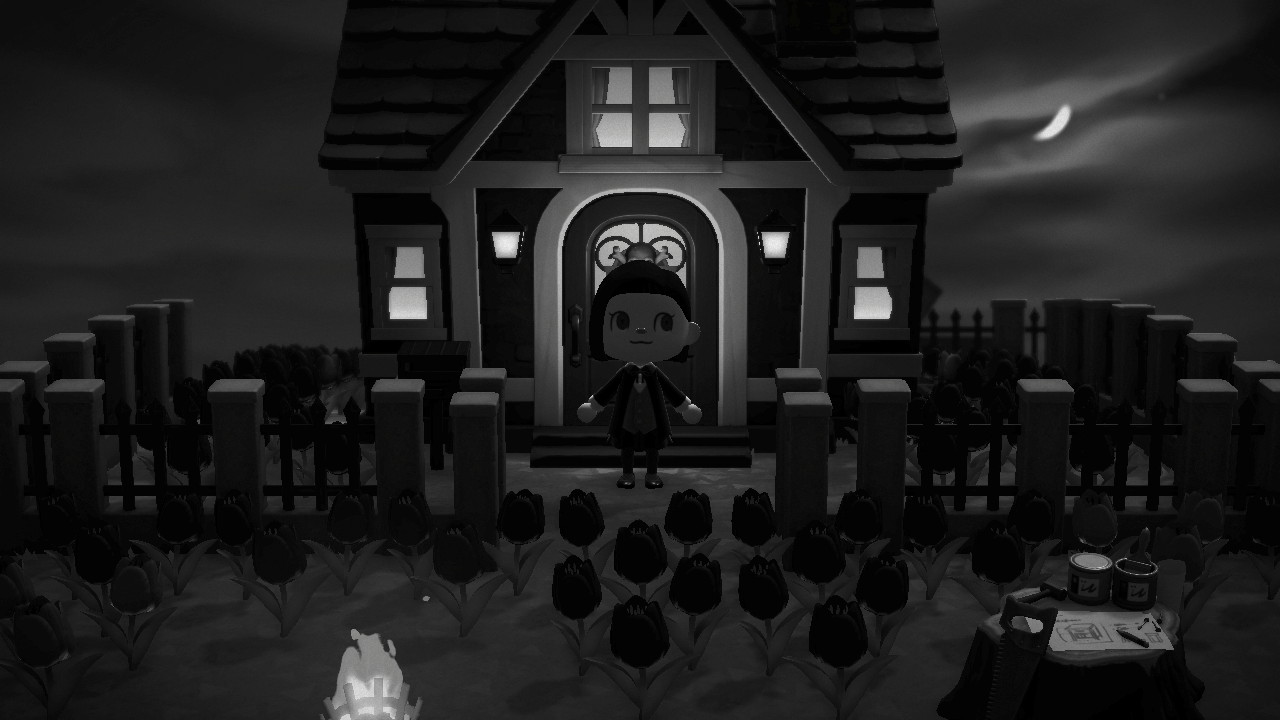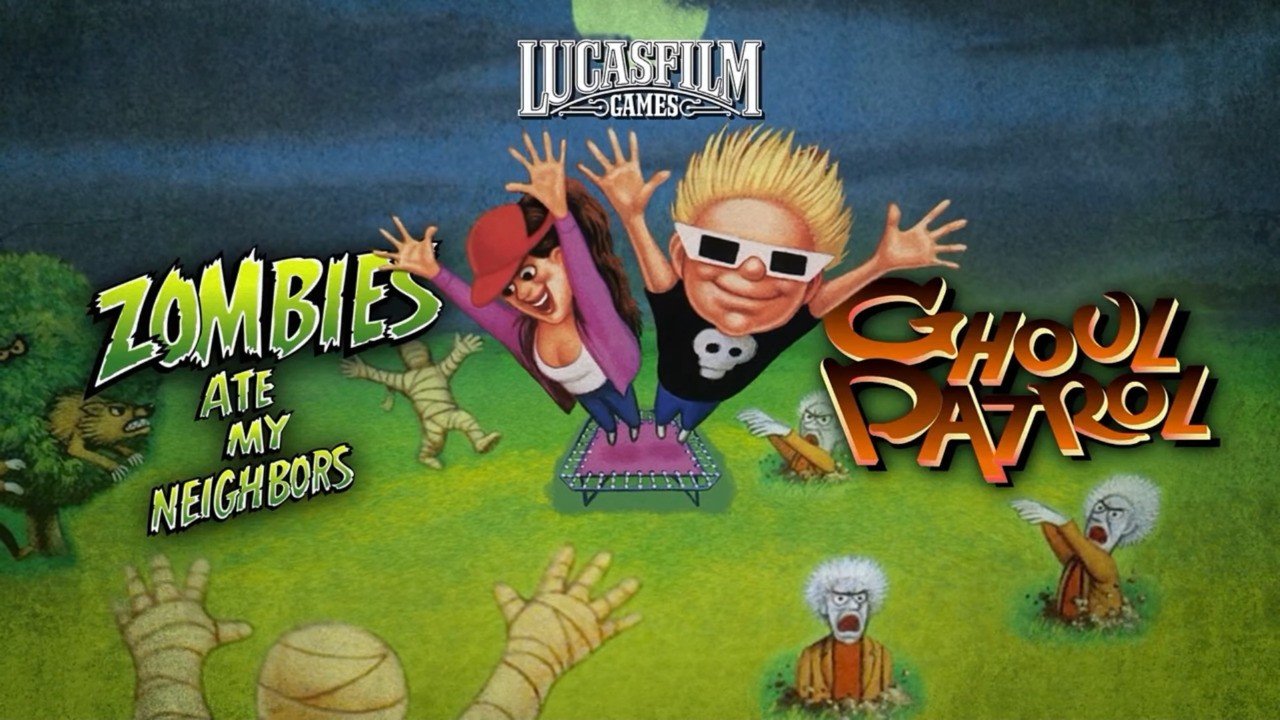
5 Major Tips for Zombies Ate My Neighbors
More Videos
Published
3 years agoon
Zombies Ate My Neighbors, the greatest videogame of the 16-bit era, makes its return to consoles this June!
Zeke & Julia are back to save the neighborhood from Zombies, Mummies, and more! Enjoy the 16-bit console gaming classic Zombies Ate My Neighbors and its sequel, Ghoul Patrol. Check out the trailer below! pic.twitter.com/q3TM9Hzr5T— Lucasfilm Games (@LucasfilmGames) May 11, 2021
LucasArt’s classic run-and-gun game, along with the much more obscure sequel Ghoul Patrol, will be arriving on the Nintendo Switch, PlayStation 4, Xbox One, as well as Steam and GOG on June 29th, 2021, and should retail for around $15 for both games.
To celebrate the exciting news about this horror comedy gaming classic, here are five things to know when you either replay, or play for the first time!
1. Hit the Bonus Level First!
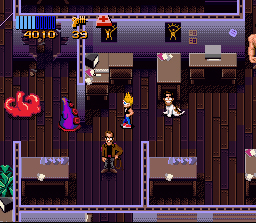
The first level of the game, “Zombie Panic!” features a secret token that opens a bonus level. This bonus level, “Day of the Tentacle” serves as an homage to Lucasart’s Day of the Tentacle adventure game and features a great many powerful items early on. The problem is that your chances of accessing it at slim. You’ll need a monster potion or bazooka to destroy the hedge wall in the northeastern section of the map, but both items are very rare in the first level. They don’t exist as standard pickups and may only spawn from cabinets and trashcans if you are very lucky.
However, with the right password, you can hit the bonus level first, load up on items such as the bazooka, and then start at the first level to replay the bonus level again. Simply use the passcode BCDF to do this. Is it cheap? Not really, you’ll likely play the same level twice. Given the hordes of monsters as you progress through the 50 or so levels you should take any advantage you can.
2. Rescue First, Gather Later!
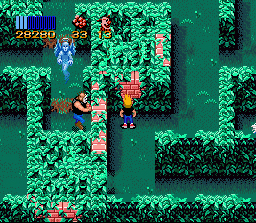
The Victims are your lifeblood in this game. You begin with ten per level and if you fall to zero victims to rescue in a level it is game over. Victims can be returned when you hit certain score thresholds, but it really is in your best interest to rescue them as fast as you can and not lose a single cheerleader, baby, or tourist.
Not all Victims are at risk, however, so be sure to prioritize your rescues based on monsters and victim exposure. Trampoline Kids, for example, are general safe from any harm, allowing you to focus on more exposed Victims, such as those out in the open. Locked doors are often helpful for keeping victims out of reach, but some monsters may still be able to reach them. Don’t neglect Pool Guys on levels with Fishmen either, early in the game the guys floating in swimming pools are generally safe. Not so much as you progress.
With the Victims as your priority, don’t worry about scoring monster kills or gathering items until you’ve spawned the exit door, that way you’ll always have a quick out when needed.
3. Use the Radar!
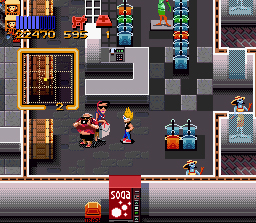
The radar in the game is a proximity-based window that lists the current Victim count and their relative positions to you within a certain range. This is especially helpful on more maze-like levels. As soon as you pop into a level, activate your radar and start rescuing civilians. This is your priority.
Use a combination of your radar, situational awareness, and caution to make sure you keep your Victim tally high. Victims are also worth various levels of points, so you’ll need to make sure you maximize your run every time.
Remember to rescue based on Victim vulnerability, and don’t fret if they are surrounded by monsters, there is a way around that…
4. When in Doubt, Run Away!
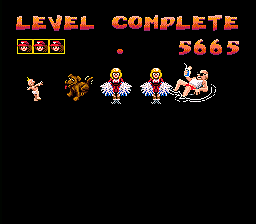
Computer memory in classic gaming consoles could be very limited. You can actually use this to your advantage to maximize your gameplay. Specifically, enemies that fall a certain range off screen will despawn. How helpful can this be? Well, consider two scenarios.
Scenario A: A lone dog is menaced by a crowd of zombies and you are separated from it by a wall. if you manage to get the dog and the zombies off your screen there is a chance the zombies despawn, giving you a chance to find another way to the dog. Remember, monsters will vanish, but the Victims will not, as their positions are preset.
Scenario B: If you are being menaced by one of the sub-boss monsters, such as Chainsaw Guys, Vampires, and Werewolves, you can get them to despawn by getting them off your screen. The range will vary, but this can be very helpful at times if you can get it to work.
5. Some Weapons are Stronger than Others!
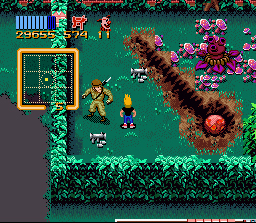
The arsenal of Zombies Ate My Neighbors can be large and wacky, but there are some key weapons and items you’ll want to gather and use. Your most frequently used item is also the most basic: the Water Gun.
The Water Gun is filled with Holy Water and will kill a zombie in a single hit, but it can also deal damage to most other monsters and is surprisingly effective. The Fire Extinguisher will freeze and weaken monsters and is a great way to control the assaults of the sub-bosses. The Weed Whacker creates a sustained pool of damage in front of you and is surprisingly powerful in shredding monsters, but the ultimate practical solution in dealing with sinister alien weeds.
There are also so many more items to consider but above all use your bazooka sparingly. It is one of the few items that can destroy barricades. We’ve not even covered the top-secret flamethrower in the game… but that is for a future article.
Are you excited about the return of Zombies Ate My Neighbors? Are you looking forward to experiencing it for the first time? How about Ghoul Patrol? Share your thoughts on this gaming classic with us. We’ll be covering more about this classic game and the more obscure sequel over the coming months.
David Davis is a writer, cartoonist, and educator in Southern California with an M.A. in literature and writing studies.

You may like
Gaming
Stygian: Reign of the Old Ones (2019), a Game Review
Stygian: Reign of the Old Ones (2019) is a tactical role-playing video game developed by Cultic Games, evoking Lovecraftian horror.
Published
3 months agoon
April 30, 2024
Stygian: Reign of the Old Ones (2019) is a tactical role-playing video game developed by Cultic Games, evoking Lovecraftian and cosmic horror. Published by Fulqrum Publishing, this game is available through Linux, macOS, and Windows. This review will cover the $19.99 Steam release.
The Great Old Ones have awakened, exiling Arkham after the events of Black Day. Design your character and face the abominations of Arkham. Explore the 1920s through a Lovecraftian aesthetic as you unravel the secrets that plague Arkham, facing unknowable cosmic horror and malicious abominations.
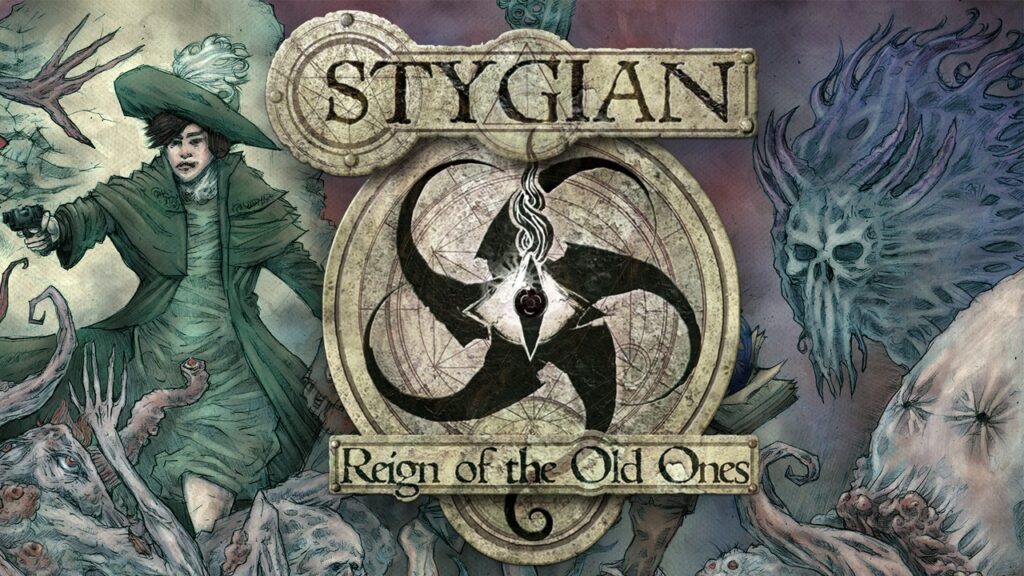
What I Like Stygian: Reign of the Old Ones
The depth of character creation starts the game off on the right foot. While appearance has various options, the game provides greater variety in motives, age, and origins, adding different gameplay elements. For example, age reflects lived experience and physical competency. The younger your character, the less experienced but more physically capable. This dynamic requires trial and error to find the best choice for you.
The paper cutout art provides a unique interpretation of a familiar (but stylish) Lovecraftian aesthetic. While not the most haunting execution of the Lovecraftian, it still manages to unsettle and unnerve while maintaining visual interest. That said, if the style doesn’t suit the player’s taste, Stygian: Reign of the Old Ones might leave that player wanting.
While I find the story engaging and the mysteries worth exploring, there’s a massive caveat to that claim. Regardless, if you fancy the Lovecraftian, few care as deeply and express as much knowledge of the genre as Cultic Games in this installment. This love and knowledge shines through in the often subtle allusions and references to the expanded universe. It may earn its place as the most Lovecraftian game out there.
The characters vary in interest and likability, but there’s usually something about them to add to the overall mystery. Naturally, this remains most evident in the companions that accompany the player on their journey.
In terms of horror, Stygian: Reign of the Old Ones achieves notable success. Despite the subjective points of aesthetics, the game brings out the most unsettling and uncomfortable elements of Lovecraftian and cosmic horror.

Tropes, Triggers, and Considerations
With an understanding of the Lovecraftian comes the question of how to deal with racism. Most properties try to remove this context, but Stygian: Reign of the Old Ones recognizes the text and era (the 1920s) with caricatures such as a lunatic in blackface. I won’t say it fully explores these toxic elements, but it’s not painted in a positive light.
Insanity and mental illness play a large role in the mechanics of the game, such as becoming a key component of casting spells. Loosely related, drug addiction and usage are mechanics with varying degrees of necessity depending on your build.
If these are deal breakers, perhaps give Stygian: Reign of the Old Ones a skip.
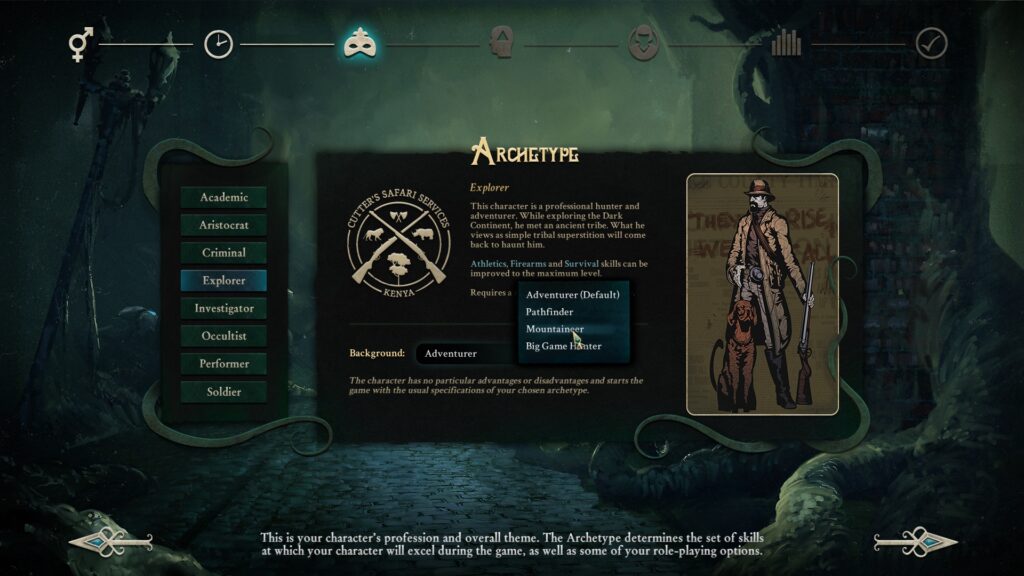
What I Dislike about Stygian: Reign of the Old Ones
In terms of story, this game is unfinished, leaving many plots, quests, and arcs with unsatisfying cliffhangers. My understanding is that Cultic Games planned to finish the game, but money ran out, and the focus shifted to an upcoming prequel. I imagine the goal is to use this new game to support a continuation. But that doesn’t change the unfinished state of Stygian: Reign of the Old Ones. The beginning and middle remain filled with content, but the final act (loosely stated) falls monstrously short.
While this unfinished state mostly affects content, I did run into game-breaking bugs. From my understanding, these bugs completely hinder progress. Most are avoidable, but some are unlucky draws.
It’s these points that make this a challenge to recommend, requiring the potential player’s careful consideration.
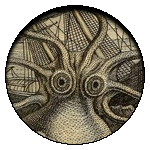
Final Thoughts
Stygian: Reign of the Old Ones accomplishes what many games fail, bringing to life the Lovecraftian. Unfortunately, this game falls short at the end and leaves game-breaking bugs as potential deterrents for full enjoyment. If what you read above entices you, it may be worth the investment. However, it’s unfair to recommend this game within its compromised state.
Gaming
Ashen (2018), a Game Review
Ashen (2018) is a souls-like action RPG developed by A44 and published by Annapurna Interactive available across all platforms.
Published
3 months agoon
April 30, 2024
Ashen (2018) is a souls-like action RPG game developed by A44 and published by Annapurna Interactive. This game provides a single-player and multiplayer experience with passive multiplayer mechanics. For this review, I am discussing the 39.99 Steam release, but it’s also available in the Epic Game Store, Xbox, Nintendo Switch, and PlayStation.
In this bitter world, your character seeks to make a home for yourself and others. This goal requires you to fight for every inch of land, building connections and alliances to maintain a thriving village. Venture further to make the world a more hospitable place, but know the further you travel, the greater the threats.
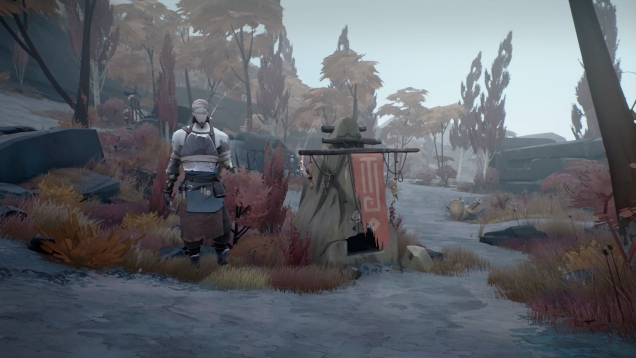
What I Like about Ashen
In 2017, Ashen earned a nomination for the Game Critics Awards’ “Best Independent Game.” It would later earn several more nominations in 2019. At the National Academy of Video Game Trade Reviewers Awards, it received nominations for “Game, Original Role Playing” and “Original Light Mix Score, New IP.” It was nominated for “Most Promising New Intellectual Property” at the SXSW Gaming Awards. Finally, at the Golden Joystick Awards, it earned a nomination for “Xbox Game of the Year.”
The multiplayer experience remains essential for Ashen, focusing on you and a partner venturing together to explore an open-world environment. However, the single-player experience is my focus and the game accounts for this gameplay. Ashen often pairs you with a villager who helps with the challenges.
The art style remains a plus throughout the gameplay. Though muted in colors and lacking finer details, the style creates a unique world that allows players to get lost along their journey. If the aesthetic doesn’t evoke that curiosity, then Ashen becomes hard to recommend.
Vagrant’s Rest and the inhabitants remain a strong incentive to continue on your journey. Seeing the progression of the town and building connections with the people provide the most rewarding experience.
In terms of horror, the art style often evokes an eerie atmosphere. However, I won’t go so far as to say the game is haunting. Instead, it evokes emotions that can unsettle and unnerve the gamer.

Thoughts and Considerations
The souls-like influence remains straightforward. Progression requires the player to defeat enemies and collect currency for weapons or certain item upgrades. Ashen simplifies and focuses its gameplay, reducing variety to polish its choices. The gameplay remains fluid, with a few hiccups that might be a computer issue.
If you prefer magic or defined classes, the gameplay doesn’t enable this variety. Item upgrades and choices define your playstyle, allowing most items to be playable at any stage of gameplay.
Weapons make a greater difference in playstyle. Most of these differences are self-evident (i.e. blunt weapons are slower but stun), but upgrades make any weapon viable. You pick an aesthetic and function, sticking with it until something better catches your eye.
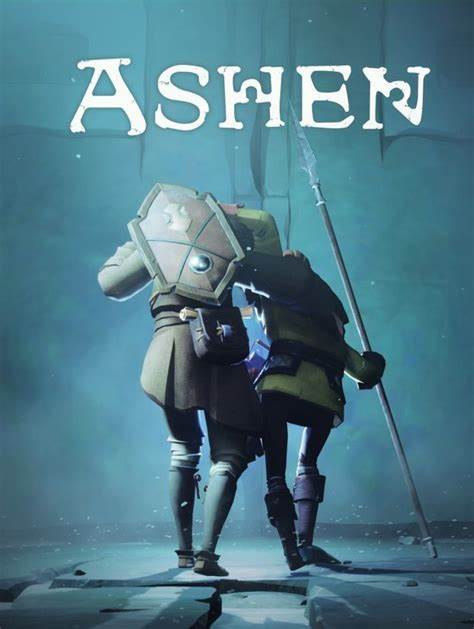
What I Dislike about Ashen
As mentioned, the game had some technical issues. I often assume this to be my computer, but I did note a few others mentioning similar issues. The gameplay remains fluid, so take this comment as a small point of consideration.
With limited roleplay options, liking the characters or art style remains essential for your time and money investment. As mentioned, the game doesn’t hold the variety of FromSoftware, which means their selling point comes from that unique art style and world.
Passive multiplayer is a major part of the marketing for Ashen. While I don’t mind this mechanic, 6 years after release reduces the overall impact. When so few wanderers appear in your game, it’s hard to see the overall appeal.

Final Thoughts
Ashen delivers a highly specialized souls-like experience, preferring to perfect what it can at the cost of variety. If the art appeals and the thirst for a souls-like has you wanting, Ashen stands as a strong contender. However, there are many contenders which make this hard to overtly recommend.
Gaming
I Have No Mouth, and I Must Scream (1995), a Game Review
I Have No Mouth, and I Must Scream (1995) is a point-and-click horror game based on Harlan Ellison’s award-winning short story.
Published
3 months agoon
April 29, 2024
I Have No Mouth, and I Must Scream (1995) is a point-and-click horror game based on Harlan Ellison’s award-winning short story of the same name. Developed by Cyberdreams and The Dreamers Guild, this adaptation brings a new perspective to a familiar story. I heard of free purchasing opportunities for this game but cannot verify the quality. For this review, I played the 5.99 Steam release.
Play as one of the remaining humans on earth: Gorrister, Benny, Ellen, Nimdok, and Ted. Each faces a unique challenge from their common torturer, the AI supercomputer known as AM. Chosen by AM to endure torment, these challenges require the participants to face their greatest failures and tragedies.

What I like about I Have No Mouth, and I Must Scream
Having experienced this story a few times, Harlan Ellison provides the most substantive execution of his vision and moral questions in this game. While all have individual merits, I assume the added content and context better dive into the relevant points he hoped to explore. He also played the voice of AM, giving us the emotional complexity of the machine as he saw it.
As the above comment indicates, I Have No Mouth, and I Must Scream remains a faithful adaptation with only one notable change. While that one change does reflect in that character’s journey, it uses that opportunity to the fullest. Where the short story left room for potentially inaccurate interpretations of the characters, this added context makes us better understand them.
The game’s writing remains a selling point for this story-driven experience. It dives further into the lore of the human characters and even allows further development of AM in the process. There are many ways to progress, and the multiple characters allow gamers to adventure further if stuck. That said, progressing individual characters to complete their journey remains essential for the true ending and experience.
As a point-and-click game made in 1995, I Have No Mouth, and I Must Scream holds up well. In many ways, it pushed the genre in its time with dynamic storytelling and game features. Harlan Ellison was someone who pushed boundaries to challenge himself and others. He saw the gaming industry as another opportunity to evoke story-driven art, a focus reflected here.

Thoughts, Triggers, and Considerations
I Have No Mouth, and I Must Scream adapts a dark and bleak story from an author notorious for his dark material. This game is no exception to that standard. Mental illness, sexual assault, genocide, and torture envelop the game. These elements are handled with attention but remain triggering to those sensitive to such dark material.
If these are deal breakers, I Have No Mouth, and I Must Scream will likely earn a skip.
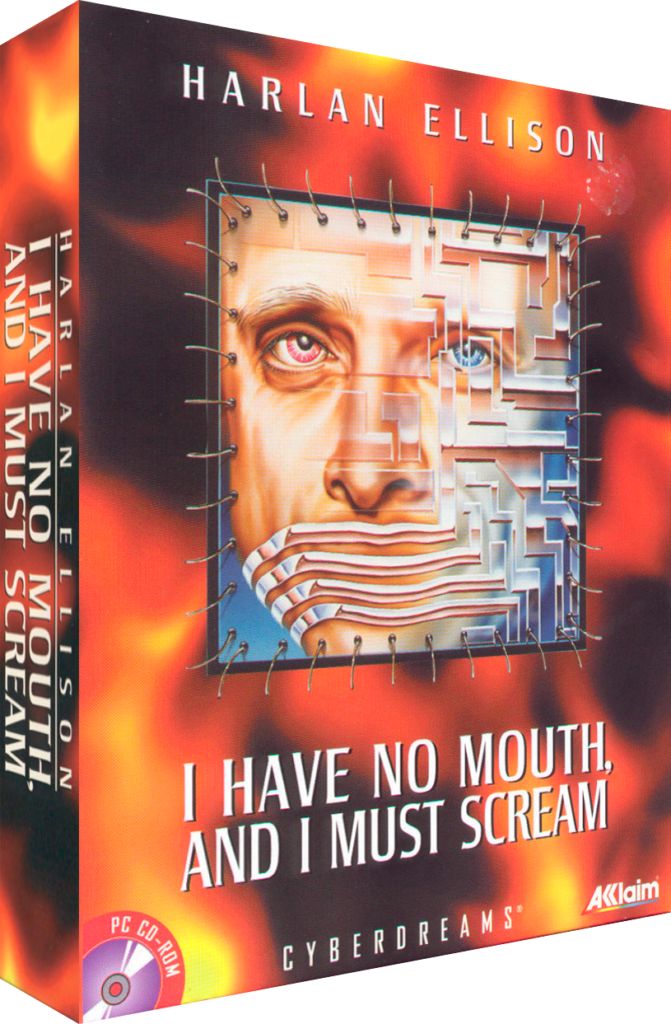
What I Dislike, or Considerations, for I Have No Mouth, and I Must Scream
While the short story remains a haunting example of fiction in every sentence, I Have No Mouth, and I Must Scream doesn’t evoke the same tension. It allows room to breathe or refocus on another character, which reduces the horror such a story evokes. While the characters participate in their torment, the loss of agency and hopelessness doesn’t translate in the execution.
Some mechanical and gameplay issues are noteworthy. For example, the saving mechanic remains dated, piling up if you save often or for specific reasons. Most of the mechanical issues stem from outdated UI from a gamer of a more modern era. Play it long enough, and elements start to click, but it needs that user investment.
Point-and-click caters to a niche audience, so modern gaming audiences aren’t inherently the demographic. The puzzle-solving and gameplay won’t win you over if the genre isn’t to your taste. Even within the genre, many of the puzzles remain challenging. For fans of the genre, this likely earns a positive merit. For those looking to continue the short story, this challenge will prove an obstacle.

Final Thoughts
I Have No Mouth, and I Must Scream provides a new opportunity for the award-winning story to reach new audiences and continue to grow. Not satisfied with repeating his story in a new medium, Harlan Ellison expands this bleak world through the point-and-click game. While not as haunting as the short story, this game provides the most context and development of any adaptation before it.




